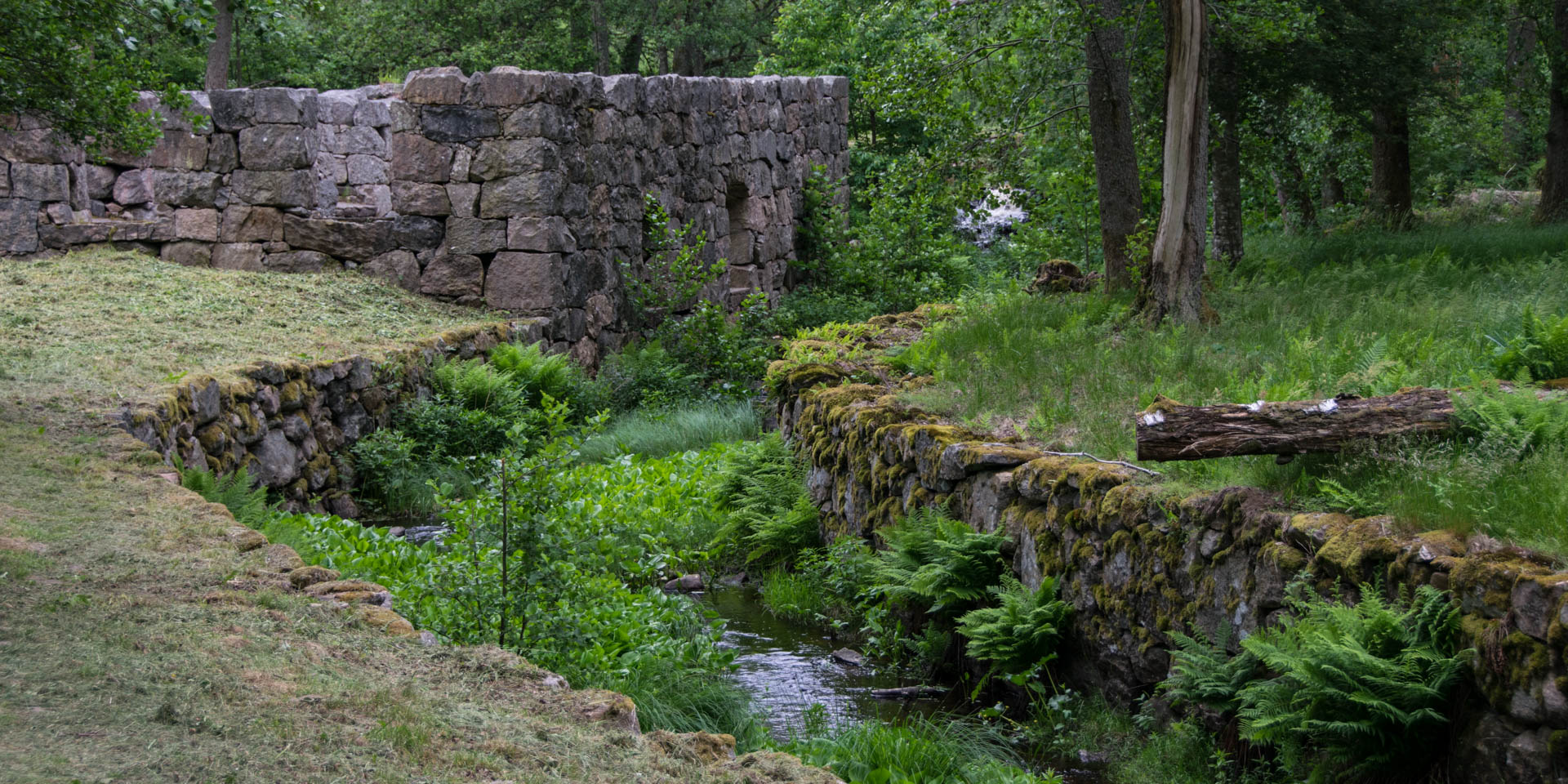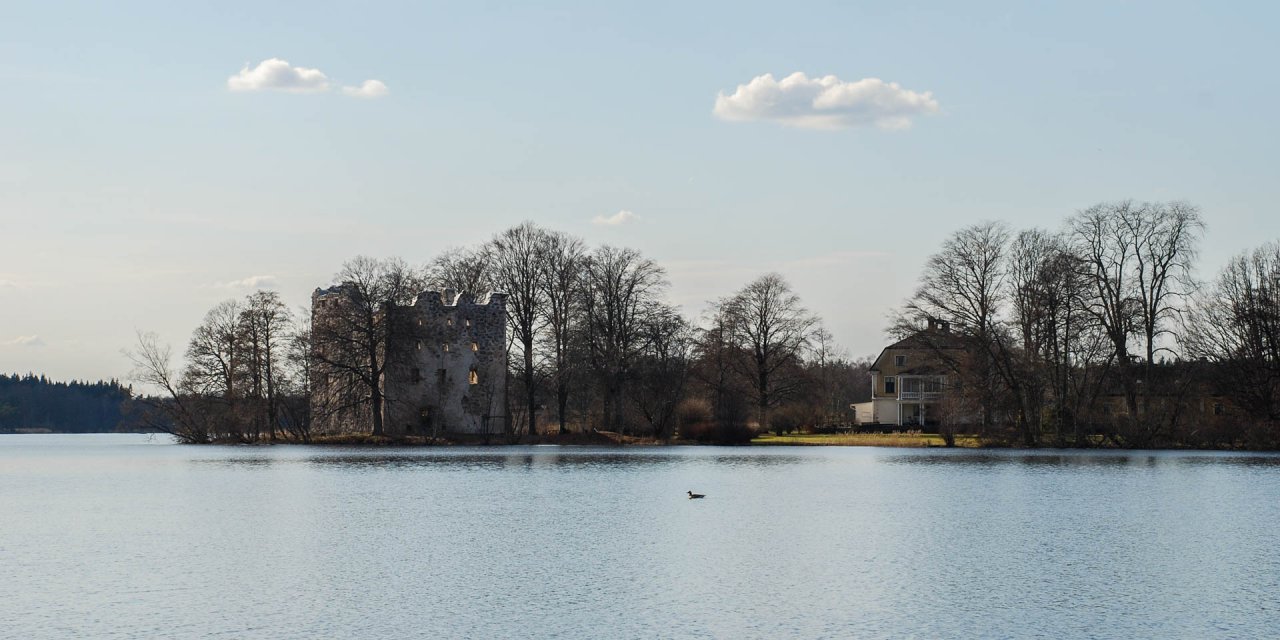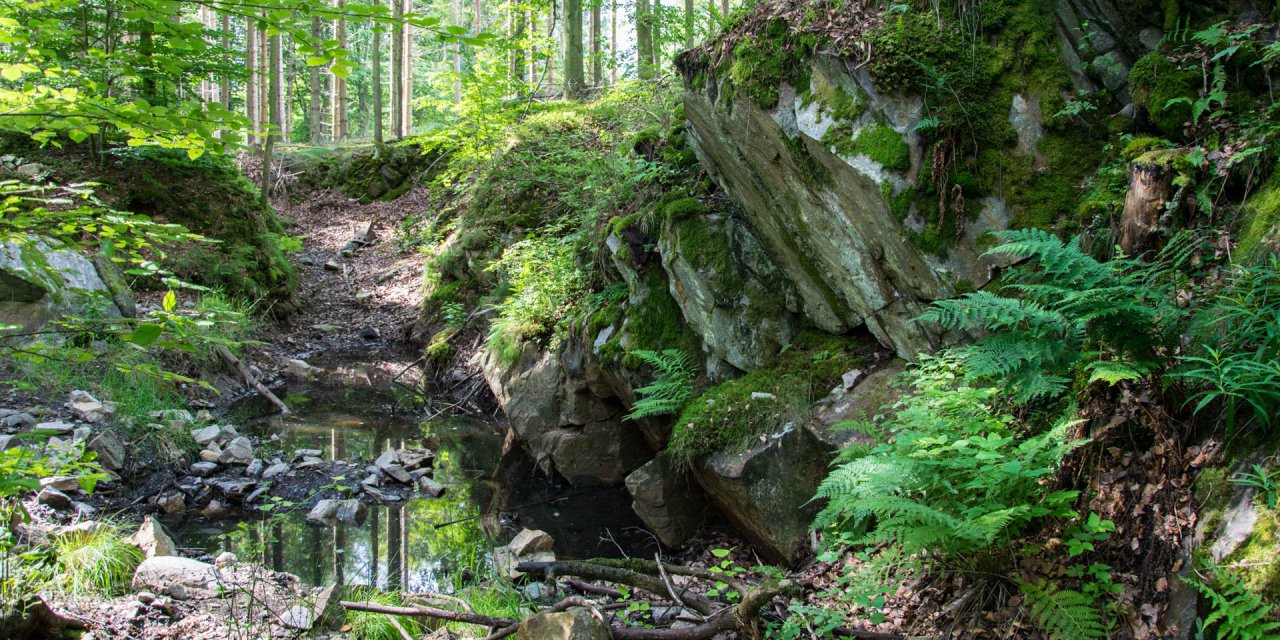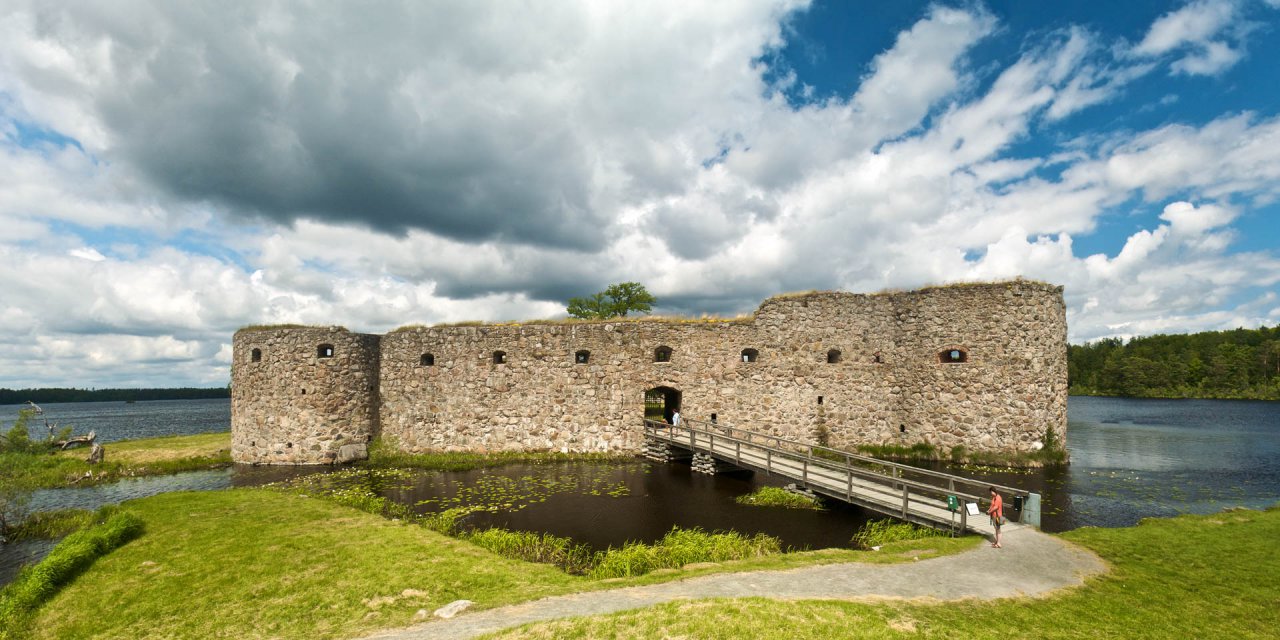

Gustavsfors
Historical factory ruins near Svinaberga
The ruins of the 18th century industrial complex Gustavsfors are located on a section of the river Helge å dominated by rapids, not far from the hamlet Svinaberga in the west of the municipality of Älmhult.
Most of the ruins of Gustavsfors are located on a large forested river island about two kilometres downriver from the old Svineberga bridge. On one side of the island the river is dammed up to form a small reservoir, while on the opposite side it rushes over the rapids.
On the island is also an old bricked canal, which used to carry water to the water wheels of the old factories. Gustavsfors paper mill, the ruins of which are located at the southern tip of the island, was the nucleus and largest factory in the small industrial area. It was founded in 1786 by officer Gustav Adolf Cavallius, who had bought the island a year earlier, previously part of Gåaryd Manor.
The birth of Gustavsfors
Parallel to the paper mill, Cavallius had himself built a manor house on the island and renamed the estate Gustavsfors after his first name. Part of the basement of the manor house still exists and right next to the remains of the former staircase is the entrance to an old prison cell where prisoners on remand were once held.
Step by step, the busy Cavellius expanded his small empire, and in the end Gustavsfors consisted of a total of ten craft factories. In addition to the paper mill, these included a tannery, a dye works, a fulling mill, a watermill, a sawmill, a smithy and a foundry on the rapids of Fredriksfors further downstream.
As industrialisation progressed, the craft enterprises soon lost their competitiveness. At the beginning of the 20th century, Gustavsfors was abandoned and the small factories fell into disrepair. The best preserved is the ruins of the paper mill, followed by the ruins of the manor house. Of all the other buildings there are at best only piles of stones or remains of walls left.
The only surviving facility in Gustavsfors is a small hydroelectric power station located at the outlet of the reservoir at the southern tip of the island, which has been producing electricity with interruptions since 1924. Today's water turbine produces about 900,000 Kwh of electricity per year and is located in a small turbine hall that looks like a red Småland house with white edges.
Discover Gustavsfors
There is a trail running through the entire area of Gustavsfors, which is laid out as a five kilometre long circular route. It starts right next to the hydroelectric power station and initially runs as a circular path of about 1.5 kilometres across the island, where almost all the remains of the old factory buildings are located. At the power station there is a display case with information about the area and a map showing the individual stations.
In addition, information signs are attached to the individual ruins, explaining the use and history of the different buildings. The circular path leads through easily passable terrain, is paved with gravel and is regularly repaired so that it is also accessible for wheelchairs and prams.
If you feel like a longer round trip through the woods along the river, after leaving the island, walk 1.5 kilometres downriver to the rapids at Fredriksfors, where the remains of the former Gåaryd foundry are located. From there you cross a bridge to the opposite side of the river and walk in a slight curve for two kilometres back to the power station. Cross the river over the bridge at Bäckaholmen, where you will also find a shop selling fishing permits (Fiskekort).
The fishing area Gustavsfors
Gustavfors is best known, even outside Sweden, not because of its ruins, but because it is a varied fishing area, where you can fish in fast-flowing white water as well as in the calm flow of the river or in the standing water of the dammed areas.
The entire fishing area is about eleven kilometres long and runs from the southern outlet of Lake Bökönasjön downstream to the bathing area Delary Badplats in the Delary Magasinet reservoir. The fish stock consists of 20 different species, including grayling, trout, rainbow trout and roach. The river is also one of the four Swedish distribution areas of the wels catfish, which is strictly protected there.



